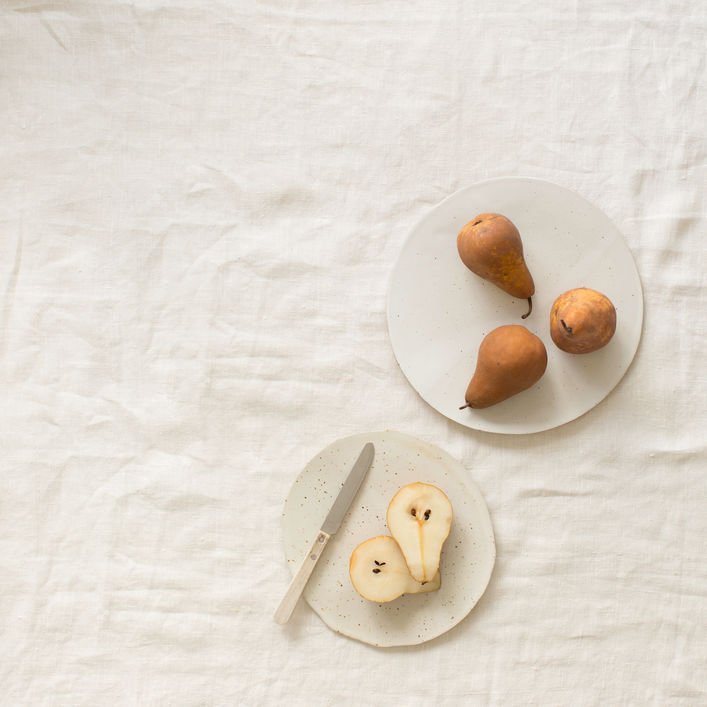
How To Cook For Your Ayurvedic Body Type To Soothe Anxiety & Depression
Considered the “medical branch off of yoga,” Ayurveda is the world’s oldest healing system first practiced in India over 5,000 years ago. In Sanskrit, Ayurveda means “The Science of Life,” philosophizing that disease and sickness can be healed by creating balance through diet and eating certain foods during different seasons.
“Ayurveda is ancient knowledge that uses the idea of healing the body through studied opposition.”
Ayurveda is a fascinating alternative to western medicine and our diet. The implementation of these ancient practices is determined for each individual based on a person’s “dosha” or “energy type.” The study of Ayurveda looks at opposition to balance the body, mind, and consciousness. This balance is created by making specific food choices that ultimately aid in soothing anxiety, depression, skin sensitivities, and many other health concerns.
Determine Your Ayurvedic Mind-Body Type
There are 3 Ayurvedic Doshas: Vata, Kapha & Pitta.
Each Dosha embodies the 5 elements—air, space, fire, water & earth. This quiz, and many others found online, can help give you insight to find out your dominant Dosha. Most people have a combination of two, however, your dominant Dosha is the one to focus on when developing your Ayurvedic diet.
Because each Dosha embodies the elements, the seasons play a huge role in how someone may feel internally and externally. A person’s dominant Dosha is increased (meaning it needs to be balanced) based on the season that it is in. Once you have determined your dominant Dosha, knowing which season it is associated with can be crucial for keeping your body and mind in balance.
Creating a specific diet for your dominant Dosha is very unique and takes some understanding of how to create balance using specific herbs, foods, lifestyle changes, and exercise routines. Below are some simple starting points about how to eat for your dominant Dosha during the seasons to soothe mental and physical upset.
Vata—Autumn Season
“Vatas are cool, dry, rough and light, so you want to think about food that contrasts those qualities.”
Vata is ruled by ether and air. Fall can create feelings of uncertainty and anxiety, and the air is typically cold, crisp, and unpredictable which can lead to an imbalance of the Vata energy.
A Vata dominant that is out of balance might experience anxiety, restlessness, spacey-ness and an overactive mind. Within any season, Vatas are cool, dry, rough and light, so you want to think about food that contrasts those qualities.
How to eat for Vata balancing:
With any dietary change or implementation, start with small steps. For instance, if you are Vata dominant there may be imbalances of not eating breakfast or eating very little. Consistent eating of small meals that are nutritious and warm throughout the day is a great way to balance Vata and help to calm anxiety.
Focus on warm vs cold. Eat cooked root vegetables versus a raw salad. Soups with warming spices like cardamom instead of a cold sandwich help to soothe Vata imbalances.
Foods that are moist and oily over dry. Think about adding fats like ghee and olive oil to your food. Stay hydrated, avoiding coffee and soda that can dehydrate the body. Moist and oily foods like avocados, coconuts, cheeses, and foods like summer squash and yogurt are great to Vata.
Eat grounding and stabilizing foods. Vata dominant that is out of balance may experience digestive issues like bloating, be cautious about eating heavy, over-processed foods or foods that are hard to digest like legumes. Food that grounds the airy Vata are things like cooked grains, root vegetables, nuts, and seeds.
Kapha—Spring Season
“Kapha qualities are heavy, slow, cool, oily, smooth, and stable so you want to think about food that contrasts those qualities.”
Kapha is ruled by water and earth. In the spring, the air is heavy and wet and can bring up feelings of loneliness and depression.
A Kapha dominant that is out of balance might experience lethargy, heaviness, feeling attached to the past and have difficulty rising in the morning. Kapha qualities within any season are heavy, slow, cool, oily, smooth, and stable so you want to think about food that contrasts those qualities.
How to eat for Kapha balancing:
The key here is to understand that with any dietary or lifestyle change, start with small steps. For instance, if you are Kapha dominant the best foods to consume are those that “invigorate the mind” and help to energize the senses in order to help pull an imbalanced Kapha out of a depressed and lonely state.
Focus on warm vs cold. Energetically, Kapha needs to focus on warming the body by eating warm, whole foods vs foods that have cooling properties. Most spices offer a warming quality and a large majority are good for Kapha balancing.
Foods that are dry over oily. Kapha needs foods that help lighten the heaviness that can sometimes be associated with the Kapha energy. Foods like beans, dried fruits and even a glass of wine are considered to be drier. Oily foods that should not be eaten as often include avocados, coconut oil, and dairy in general.
Light and airy over heavy foods. Foods that are literally lighter in weight like veggies and fruits that are cooked are a good place to start for a Kapha diet. Foods that are heavy are things like hard cheeses, puddings, bread, pasta, red meat, etc. These foods do not need to be completely avoided but eaten in moderation, especially if there is a Kapha imbalance going on.
Pitta—Summer Season
“Pitta qualities are hot, sharp, and light, so you want to think about food that contrasts those qualities. ”
Pitta is ruled by fire and water. Summer increases Pitta through its dry, hot and competitive energy.
A Pitta dominant that is out of balance might experience feelings of aggravation, judgment of others and short-tempered behavior. Pitta qualities within any season are hot, sharp, and light, so you want to think about food that contrasts those qualities.
How to eat for Pitta balancing:
The key here is to understand that with any dietary or lifestyle change, start with small steps. For instance, if you are a Pitta dominant person there is a tendency towards over-eating and overexerting. Making time to relax and meditate while also eating healthy, whole foods is important to keep Pitta balanced.
Focus on cool vs warm or hot. Because Pitta is ruled by summer, cool is the antithesis for Pitta balancing. Pitta dominant people want to aim to eat foods with cooling properties, avoiding spicy foods and ideally eating raw vegetables or only slightly cooked.
Foods that are dry over oily. Foods that continue to help elevate the heavy and hot qualities of Pitta are dry versus heavy oily food. Such as beans, potatoes, pasta, and raw vegetables. Oily foods that should be eaten in moderation include eggs, meats, and hard cheeses.
Grounding and nourishing over light foods. Pitta is the one Dosha in Ayurveda that vegetarianism is the best, helping Pitta to focus on eating foods that ground and nourish the intense Pitta energy. Foods like barley, wheat, and raw foods offer balance to their lightness. Pitta also should avoid coffee, caffeine, and alcohol because of the over-exerting energy they can create.
Ayurveda’s deep-rooted wisdom and practices have been studied for hundreds of years. Creating a specific diet and lifestyle around Ayurveda takes time and a commitment to research the nuanced diets within your dominant Dosha, along with patience in understanding how your body feels.
Enjoy finding out what feels right within your body and enjoy the process!
RELATED READING
Courtney Jay Higgins is the Associate Editor at The Good Trade. She is also a Yoga Instructor, vegetarian, wellness and fashion enthusiast. Originally from Colorado, her soul found California when she came to get her degree in Visual Communications at the Fashion Institute Of Design & Merchandising. She has a background in telling a story through writing, creative direction and content creation. Check out her blog and Instagram for her unique perspective on the mergence of fashion and spirituality.

